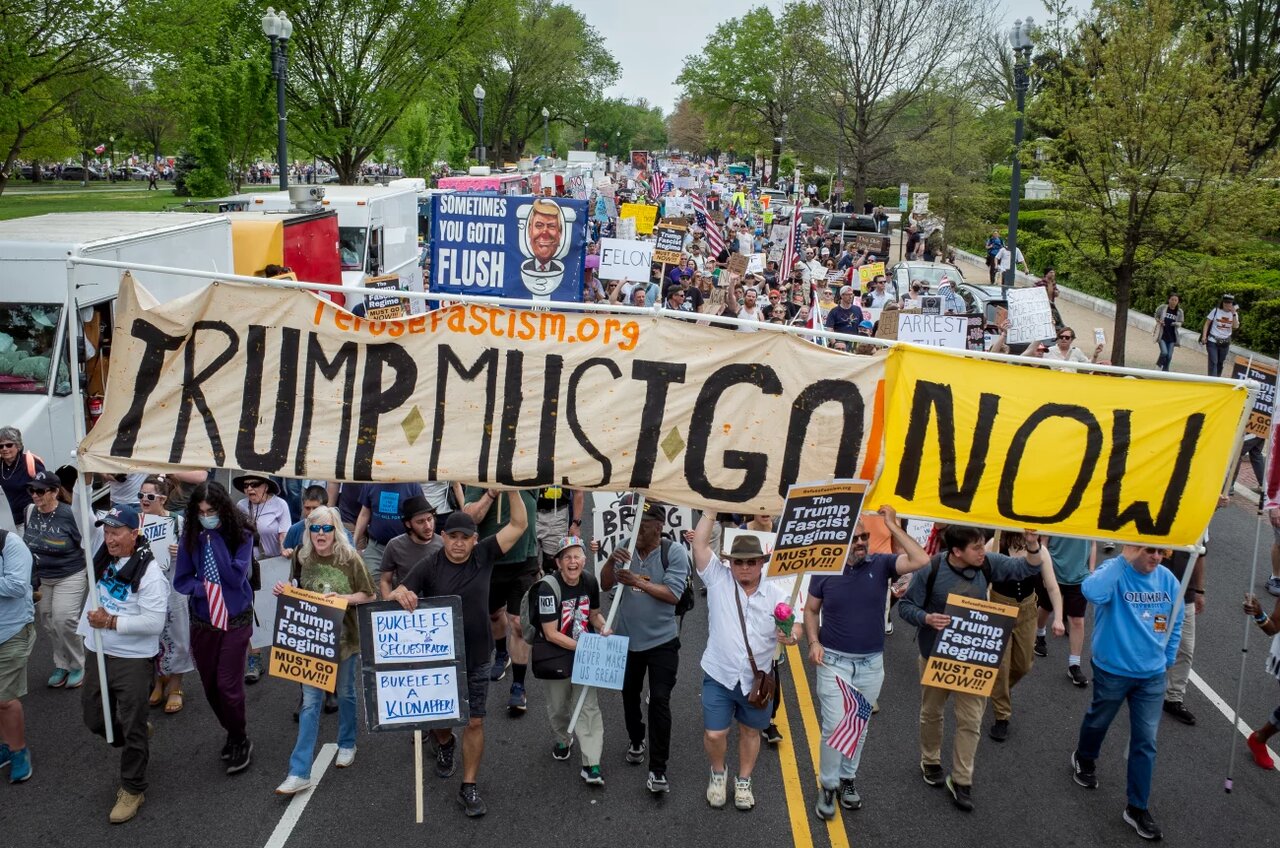The day Americans march against authoritarianism
The day Americans march against authoritarianism
TEHRAN—The nationwide "50501" protests held on April 19 represent a significant and multifaceted grassroots mobilization against President Donald Trump's policies and governance style during his second term.

The 50501 Movement has initiated a strategic escalation by organizing demonstrations across all 50 states to turn widespread public dissent into sustained political pressure.
In the initial months of 2025, the 50501 Movement formed to counter what its organizers label an authoritarian takeover by the Trump administration through hostile means. The movement that began on Reddit forums in January quickly transformed into a nationwide protest network operating under the banner 50 Protests in 50 States One Movement.
Core complexities and motivation of the protesters
The protests characterized the broad spectrum of political grievances against the Trump administration about its policy issues and its style of governance. Some of the central issues include the following:
Executive overreach and the erosion of democratic norms: Protesters condemned Trump for using executive orders to dismantle federal agencies, curtail media access, and question judicial decisions. Many perceive those actions as undermining constitutional checks and balances while imperiling the rule of law.
**Immigration and due process violations: **The wrongful deportation of Kilmar Abrego Garcia, a green card holder and activist, to El Salvador without due process became the flashpoint of outrage. That individual instance thus became a symbol of the broader issues of aggressive immigration enforcement, criminalization of dissent, and violations of civil liberties.
Economic inequality and "billionaire takeover": Protesters highlighted job cuts from the Elon Musk-led Department of Government Efficiency (DOGE), increasing cost of living, and relative consolidation of power by the rich elites against the administration's economic policies. They particularly targeted individuals like Musk for exerting influence over governmental decisions and suppressing dissent.
Civil rights and social justice: Demonstrators have been raising alarms against threats to voting rights, reproductive health, racial justice, and protections for marginalized communities. The protesters also expressed solidarity with other humanitarian issues, notably pro-Palestine expressions, linking U.S. foreign policy to the domestic struggle for justice.
Historical and symbolic framing: Many protests, such as the Philadelphia rally at Independence National Historical Park, invoked revolutionary imagery and slogans such as "No Kings", drawing parallels between the Founding Fathers' struggle against the monarchy and contemporary resistance to perceived authoritarianism.
Scale, diversity, and tactics
The Trump 50501 protests are said to be unprecedented, with over 525 protests taking place within the state and federal capitals, courthouses, city halls, and symbolic sites like outside the White House and against Tesla dealerships. The emphasis on non-violence is held across the movement. It is from the perspective of maintaining democratic principles, although there have been small conflicts, ranging from an altercation where a pro-Trump individual disruptively confronted a Democratic representative.
In addition to street protests, many events included community support initiatives such as food drives and mutual aid, which augment the political protest with social solidarity. The double focus enhances the claim to legitimacy, further broadening the constituency that felt the effects of the consequently enacted policies.
Political and social implications
The 50501 protests are connected to, and signal, a deepening political divide and crisis of legitimacy in governance. Public opinion polls indicate that support for Trump is slipping, particularly in terms of economic issues and civil rights. The protests and the political crisis are demonstrations that amplify the real problems reflected in public opinion polls.
Although disputable, the framing of the Trump administration as fascist or authoritarian struck a note of resonance for participants who made analogies with the Nazis and other repressive governments in their histories. The protests reflect divisions within the Democratic Party and broadly the opposition.
For example, protesters have expressed their displeasure with the political establishment, including the Democratic Party and its leaders, over their inaction or slow response to crises based on historical cruelty despite being aware of the administration's "Project 2025" playbook, which describes how to consolidate power.
The division speaks to challenges posed by countering grassroots mobilization into political action now that it has happened.
Conversely, the obvious lack of official reaction to the protests on behalf of the Trump administration indicates a possible strategy of ignoring criticism, specifically dissent, or attenuating the relevance of the protests; this could defuse the protests' water temperature or create a bigger boiling pot, depending on how these events transpire.
In closing, the protests on April 19, as part of the 50501 movement, represent a pivotal moment in American contemporary political activism characterized by collective opposition against the Trump administration's policy directions and authoritarianism.
Historically rooted in a grassroots organizing movement and historical resonance, the 50501 movement represents a challenge to the administration's activities, including executive overreach, immigration enforcement, and welfare inequality, directing its energy towards civil rights.
source: tehrantimes.com